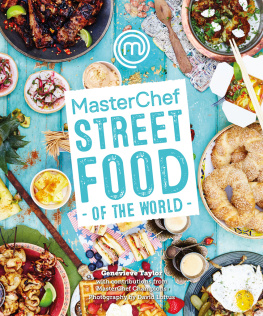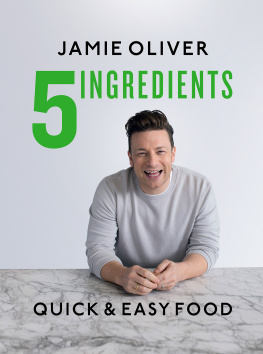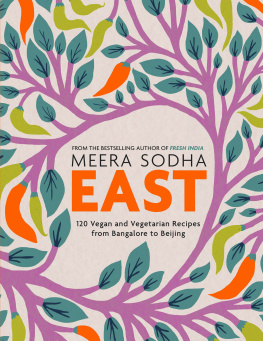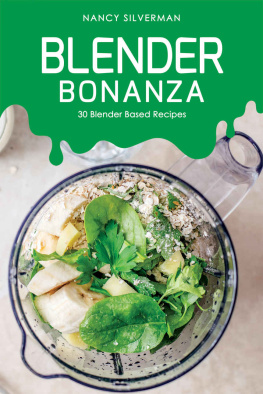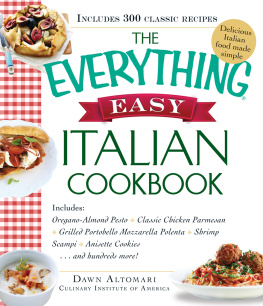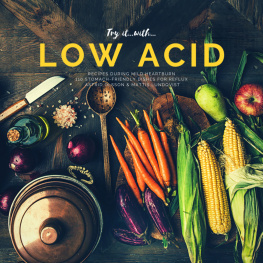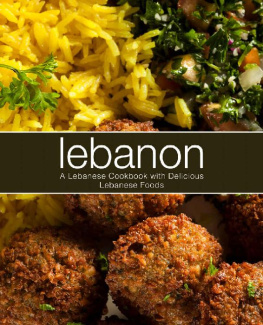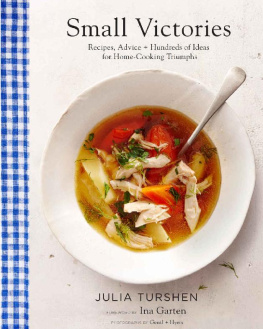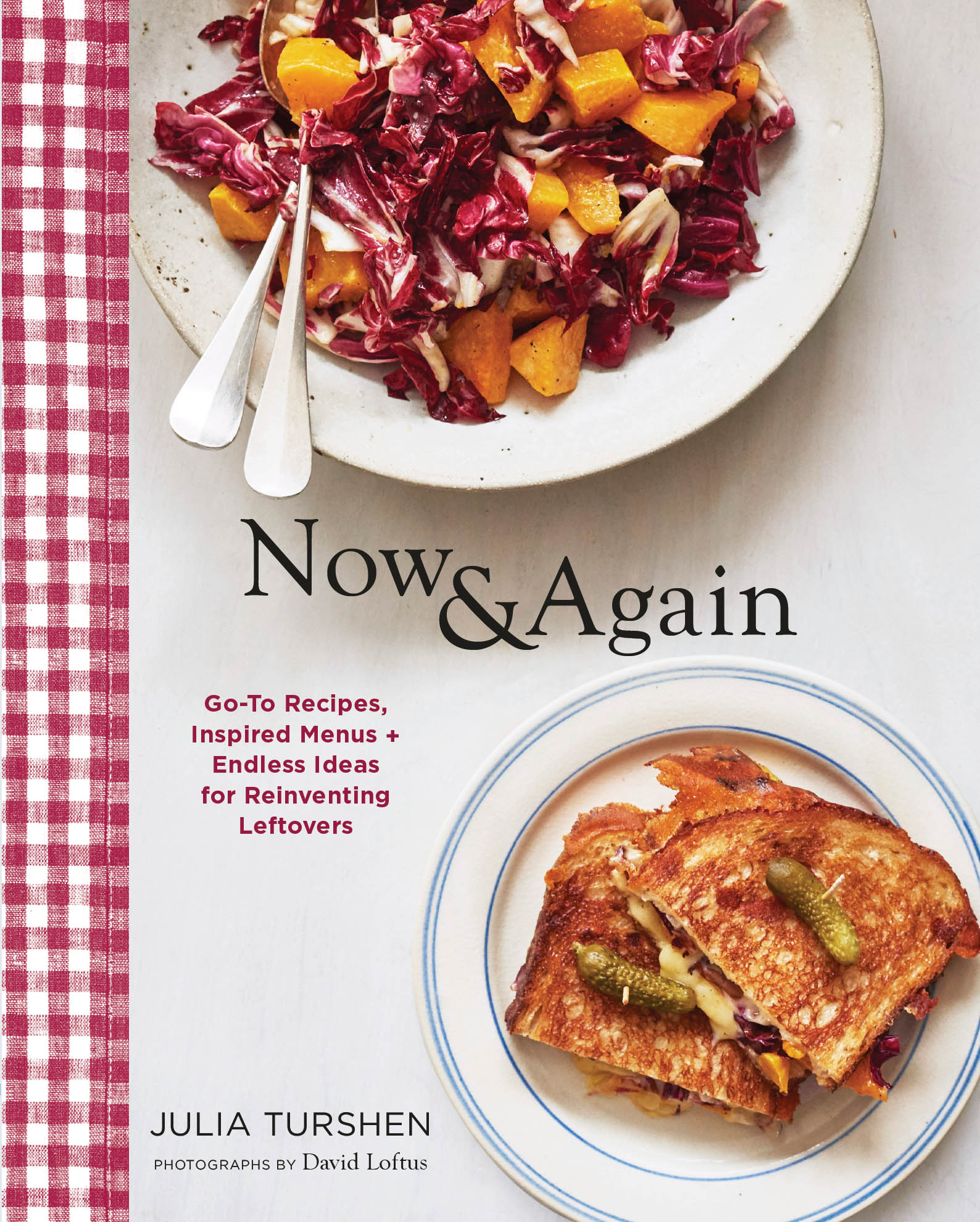


For Grace, whom I fell in love
with then and do again and again...
Text copyright 2018 by Julia Turshen.
Photographs on , and cover photograph copyright 2018 by Jen May.
All other photographs copyright 2018 by David Loftus.
All rights reserved. No part of this book may be reproduced in any form without written permission from the publisher.
ISBN 9781452164960 (epub, mobi)
Library of Congress Cataloging-in-Publication Data
Names: Turshen, Julia, author. | Loftus, David, photographer (expression)
Title: Now & again / by Julia Turshen; photographs by David Loftus.
Other titles: Now and again
Description: San Francisco : Chronicle Books, 2018. | Includes bibliographical references and index.
Identifiers: LCCN 2017040842 | ISBN 9781452164922 (hardcover : alk. paper)
Subjects: LCSH: Cooking. | Cooking (Leftovers) | LCGFT: Cookbooks.
Classification: LCC TX714 .T8785 2018 | DDC 641.5dc23 LC record available at https://lccn.loc.gov/2017040842
Cover photograph by Jen May
Prop styling by Rebecca Bartoshesky and Julia Turshen
Food styling by Tyna Hoang, Caroline Lange, and Julia Turshen
Designed by Vanessa Dina
Typesetting by Howie Severson
Chronicle books and gifts are available at special quantity discounts to corporations, professional associations, literacy programs, and other organizations. For details and discount information, please contact our premiums department at or at 1-800-759-0190.
Chronicle Books LLC
680 Second Street
San Francisco, California 94107
www.chroniclebooks.com
INTRODUCTION

Now & Again has three goals.
One is to dismantle the idea that making a full meal has to be both difficult and expensive. The second is to show how leftovers can be an invitation to really fun, inventive cooking. The third and final is to make sure you have all of the tools you needthe inspiration and informationto gather people around your table because that is the best part about home cooking.
But first I owe you some full disclosure. Now & Again started as a completely different book. Based on my love of leftovers, I had an idea to write a book about reinventing them called... wait for it... Its Me Again. Cooking with leftovers makes me so excited: youre already halfway there! I was very thrilled about the idea. I was also sure it wasnt enough. I wanted to give you not only ideas for how to reinvent leftovers but also recipes for what to make in the first place.
In thinking about what these recipes would be, I kept coming back to a question a lot of friends and family seemed to be asking me: what should I serve with it? This question also ties into what and how I really cook at home every day. I rarely ever cook just a single thing. Even if its just a salad next to a roast chicken or a toasted pita underneath scrambled eggs with a little yogurt spooned on top, I tend not to cook stand-alone recipes, but rather a few simple things that all complement one another and make the sum greater than the parts. I am all about what goes with what.
For me, creating menus isnt about entertaining, which can feel intimidating. Its about storytelling. Theres always something(s) alongside the main thing on my table. And its in the relationship those things share that full pictures get painted and stories are told. It could be as simple as meatballs with spaghetti, with maybe a little garlicky toast to sop up the sauce or a tangle of peppery arugula to add something green and to balance the whole thing. Each of those things is made better by the relationship it has with its friends. By assembling all of them, the meatballs and the salad and so on, Im not just making food. Im making a meal with a clear point of view and a story.
My forever goal for what I cook, eat, and for the recipes I write is to feel connected. Im always searching for and celebrating this feeling. It doesnt matter to me if its a fancy lobster dinner or an omelet at the diner (honestly, I prefer the latter). I am just as excited about the popcorn from the hardware store as I am about the spiciest fried chicken in Nashville, the most lovingly baked bread, and my family recipes handed down for generations. All of these things are connected to something. In preparing them and eating them, the experience becomes more than just food. Its tied to a feeling.
Food, after all, isnt just something we eat. Its a lens through which we can understand ourselves and all of the folks that came before us. Its also the lens through which we can, remarkably, better understand one another. Cooking is an easy way to connect with people, both those you know and those who are different from you, on a regular basis.
As a teenager, I wrote menus in the margins of my school notebooks. It was my favorite way to daydream. Those menus felt like little fantasies of the life I might one day lead, of the dishes I could make to celebrate special occasions and holidays, and of the ones I could stir up when comfort was needed. It was my way to imagine and connect with the world beyond my classroom. It was also a way to connect with myself and with the independent life I so very much wanted to live. As an adult, I can attest that bringing these menus to life for everyone I care so deeply about, and for all of the people I want to know better, gives me enormous joy and satisfaction.
This idea of connection, both with the dishes on the table and with the people sitting at it, is why I arranged this book by menus instead of stand-alone recipes. Some are incredibly easy, like the that is just sandwiches, some nectarines and nuts, and some cookies. Its not much cooking. But its the perfect balance of things, each in relation to the other. Its also tied to a memory, and its a way for me to evoke that memory. Food, in other words, is an effective way of chronicling life. For example, those particular sandwiches were the same ones my wife, Grace, and I had on a hike near our home in upstate New York. While I might not always immediately recall exactly where the trail was, I will always remember the sandwiches. And in remembering them, the whole day comes back to me.
Some menus in the book, like the one for Thanksgiving, are more involved. But no matter how few or how many components, each menu is built on food thats entirely doable. There are also timetables for each menu, so its clear exactly what and how much you can make ahead, plus lots of thoughts throughout on things that go well with the menus that require no work whatsoever (like sometimes orange wedges are all you need after a big meal). Theres even a list of great things to delegate on .
And then, Its Me Again, which are all of the ways to reinvent the leftovers. Grace and I live in a small, rural town and eat almost all of our meals at home. Therefore, we always make a bit more than we can finish at a single sitting. Tomorrows meals are always informed by whats left over from today and so on. Its proven to be a really relaxing, effective cycle, and were always sure theres something good to eat. All of the recipes in this book come from that similar place of plenty, from the feeling that there is more than enough. And where there is more than enough, there are leftovers. And where there are leftovers, there are endless opportunities for reinvention. These suggestions are some of the most fun parts of the book. Theyre full of ideas for how to turn the leftovers into entirely new dishes that, as Grace says, dont taste like the same thing again! Note that all of these ideas for leftovers are applicable whether or not you made the original to make referencing them extra easy.
Next page

